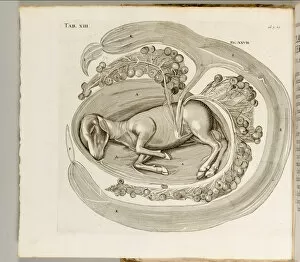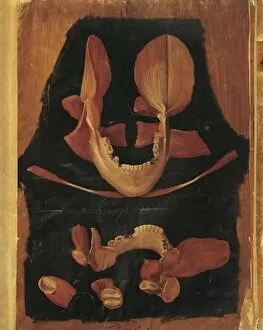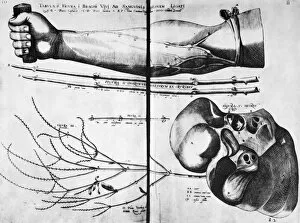Hieronymus Fabricius Collection
Hieronymus Fabricius, also known as Girolamo Fabrizio, was a renowned Italian anatomist and surgeon of the 17th century
All Professionally Made to Order for Quick Shipping
Hieronymus Fabricius, also known as Girolamo Fabrizio, was a renowned Italian anatomist and surgeon of the 17th century. Often referred to as "The Father of Embryology, " Fabricius made significant contributions to medical science through his extensive research and detailed anatomical illustrations. One of his notable works is "An Animal in the Womb, " an engraving from 1738 that showcases his expertise in embryology. This piece exemplifies Fabricius' meticulous observation and documentation of fetal development, providing valuable insights into the early stages of life. Fabricius' groundbreaking studies on the valves of veins were published in his tract titled "De Venarum Ostiolis" (On the Valves of Veins) in 1603. This work revolutionized our understanding of circulatory system dynamics and paved the way for future advancements in cardiovascular medicine. His anatomical plates are highly regarded for their accuracy and attention to detail. From illustrating intricate structures like the human brain, facial muscles, anatomy of the head, mouth, vertebral columns, vertebrae, to even bones of the foot – each plate reflects Fabricius' commitment to precision and scientific rigor. Throughout history, it has been recognized as a pioneer who pushed boundaries within anatomy and surgery. His contributions have left an indelible mark on medical science by expanding our knowledge about human physiology. Today we honor this remarkable Italian anatomist whose dedication continues to inspire generations of scientists striving for a deeper understanding of our complex bodies.









